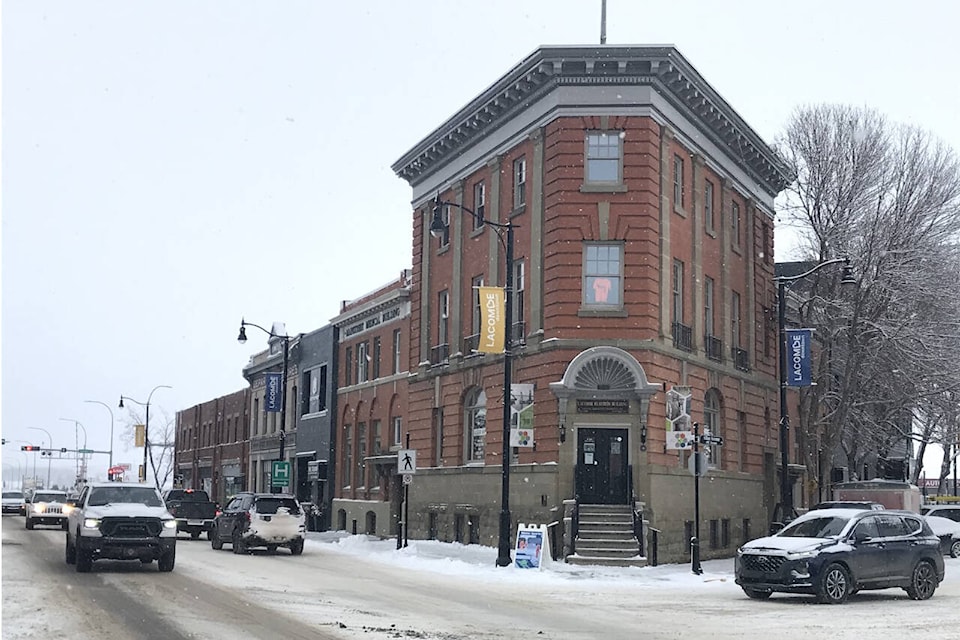City of Lacombe has a new crosswalk improvement plan.
City staff have spent two years doing a deep dive into the community’s crosswalks to see where improvements can be made.
Among the changes being made is increasing the zone near crosswalks where parking is not allowed from five metres. The Transportation Association of Canada recommends 15-metre no parking zones before a crosswalk and a 10-metre zone after.
Under the plan, 15-metre zones will be the standard, engineering services manager Amber Mitchell told council on Monday. At some crosswalks, four to six parking spaces might be lost,
However, if there is push-back from residents, city staff will consider other options for council to consider.
For instance, in areas where street parking is in short supply, curb extensions into the road could be considered to give drivers a better view of pedestrians waiting to cross. That would allow for a smaller no-parking zone.
After looking at the last three years, staff recommended an annual budget of $70,000 for new or upgraded crosswalks in the Active Transportation — Crosswalk Improvement Plan approved by council on Monday.
“Our citizens expect crosswalks to be developed in a manner that is safe, logical and consistent with Lacombe’s vibrant look and feel,” said Mayor Grant Creasey in a statement. “This plan allows for long-term planning that meets expectations of our residents and provides an ideal template for future work.”
Staff also reviewed two dozen crosswalk improvement requests from residents. Two were recommended for future upgrades, nine for new crosswalks and five will be further reviewed. Eight requests did not merit any changes.
Staff also looked at other ways to improve safety. Of the two dozen crosswalks analyzed by staff, 14 had poor sight lines, eight required a lighting review by Fortis to see if they could be better illuminated and 14 needed improvements to make them more accessible.
